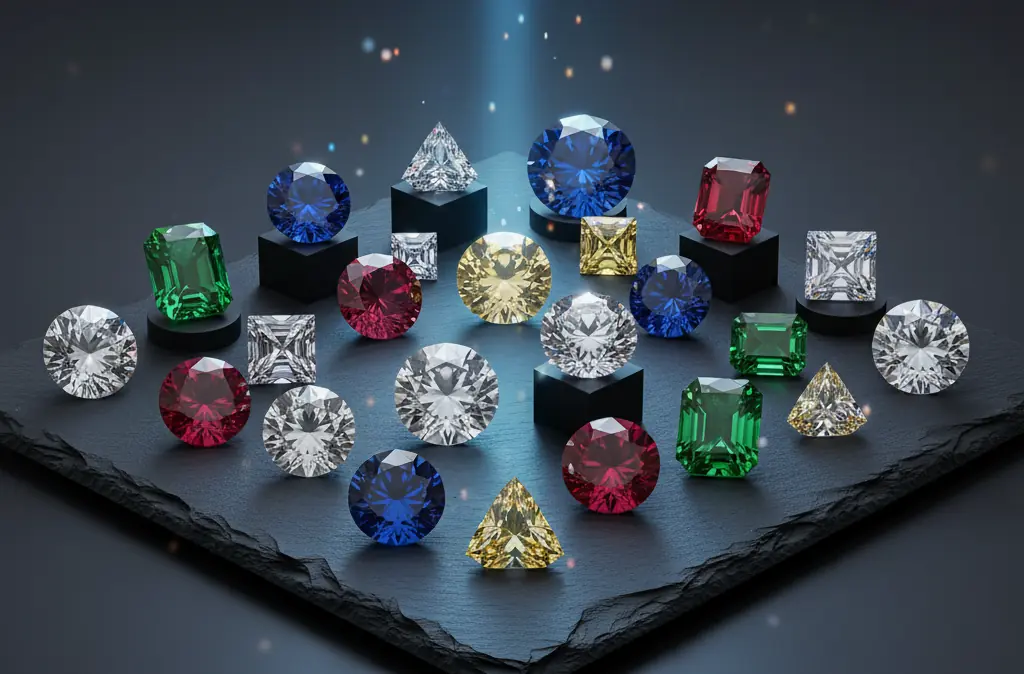The Evolution of Gemstones: From Earth's Depths to Laboratory Brilliance
For centuries, precious gemstones have captivated humanity with their beauty, rarity, and symbolic significance. Traditionally, these treasures were extracted from the earth through mining, a process often associated with environmental impact and significant cost. However, a revolution is underway in the gemstone industry, driven by scientific innovation and a growing demand for ethical and sustainable alternatives. Lab-grown gemstones, also known as synthetic gemstones, are changing the landscape, offering consumers breathtaking beauty and exceptional quality without the traditional drawbacks.
What Are Lab-Grown Gemstones?
Lab-grown gemstones are, quite simply, gemstones that are created in a laboratory environment rather than mined from the earth. The crucial distinction is that they are chemically, physically, and optically identical to their natural counterparts. They are not simulants or imitations; they are real gemstones, just produced through advanced technological processes. These processes replicate the conditions under which natural gemstones form deep within the Earth, but in a controlled and accelerated manner.
The benefits of lab-grown gemstones are numerous:
- Ethical Sourcing: Lab-grown gems eliminate concerns about conflict diamonds or unethical mining practices.
- Environmental Impact: The environmental footprint of laboratory creation is significantly lower than traditional mining.
- Affordability: While still valuable, lab-grown gemstones are typically more affordable than naturally mined stones of comparable quality.
- Purity and Quality: Laboratories can control the creation process to produce stones with exceptional clarity and fewer inclusions.
- Sustainability: They offer a more sustainable choice for consumers who value environmental responsibility.
Moissanite: The Star of Lab-Grown Brilliance
Among the array of lab-grown gemstones, Moissanite has emerged as a particularly popular and compelling choice, especially for engagement rings and fine jewelry. First discovered in a meteorite crater in 1893 by French chemist Henri Moissan, natural Moissanite is extremely rare. The Moissanite we see in jewelry today is a laboratory-created silicon carbide (SiC).
The Science Behind Moissanite's Sparkle
Moissanite boasts a unique set of optical properties that rival, and in some aspects surpass, those of diamonds. Its brilliance and fire are truly exceptional:
- Refractive Index: Moissanite has a higher refractive index (2.65-2.69) than diamond (2.42), meaning it bends light more effectively, resulting in more sparkle.
- Dispersion (Fire): Its dispersion, the ability to split white light into spectral colors, is significantly higher than diamond's. This is what gives Moissanite its characteristic rainbow flash.
- Hardness: Moissanite ranks 9.25 on the Mohs hardness scale, making it incredibly durable and suitable for everyday wear. It is harder than most gemstones, second only to diamond (10 on the Mohs scale).
- Clarity: Lab-created Moissanite is typically flawless or near-flawless, as the creation process is carefully controlled.
- Color: While naturally occurring Moissanite can have color, the lab-created version is often colorless or near-colorless, appearing similar to a D-G color diamond. Some variations display a subtle, attractive warmth.
Moissanite vs. Diamond: A Comparative Look
The comparison between Moissanite and diamond is inevitable, and understanding their differences helps appreciate Moissanite's unique value proposition:
- Sparkle and Fire: Moissanite exhibits more intense fire (rainbow flashes) than diamond due to its higher dispersion. Some prefer this vibrant display, while others favor diamond's more subtle brilliance.
- Hardness: Both are exceptionally hard, but diamond remains the undisputed champion. However, Moissanite's 9.25 hardness is more than sufficient for daily wear, making it resistant to scratches and abrasions.
- Clarity: Moissanite is often eye-clean (flawless), whereas natural diamonds can have visible inclusions.
- Cost: Moissanite offers significant cost savings compared to diamonds of similar size and quality. This makes exquisite jewelry accessible to a wider range of budgets.
- Ethical and Environmental: Both lab-grown Moissanite and lab-grown diamonds offer ethical and environmentally conscious alternatives to mined stones.
Other Notable Lab-Grown Gemstones
While Moissanite shines brightly, the world of lab-grown gemstones extends to other beloved stones:
- Lab-Grown Diamonds: These are chemically and physically identical to mined diamonds, created using methods like Chemical Vapor Deposition (CVD) or High-Pressure High-Temperature (HPHT).
- Lab-Grown Sapphires and Rubies: These corundum varieties can be created in a lab, offering vibrant colors at a fraction of the cost of natural stones.
- Lab-Grown Emeralds: While more challenging to produce with the same perfection as natural emeralds, lab-grown versions are available and offer a more affordable option.
The Future of Gemstones
Lab-grown gemstones are more than just a trend; they represent a significant shift in how we source and appreciate precious materials. They offer a harmonious blend of scientific advancement, ethical responsibility, and stunning aesthetic appeal. For consumers seeking brilliance, durability, and value, especially in the context of engagement rings and special occasion jewelry, Moissanite stands out as an exceptional and increasingly sought-after choice. As technology continues to evolve, we can expect even more breathtaking and accessible gemstone options to emerge from the laboratory, enriching the world of fine jewelry for generations to come.



